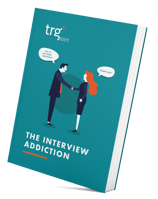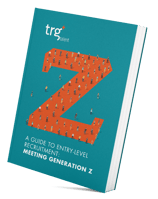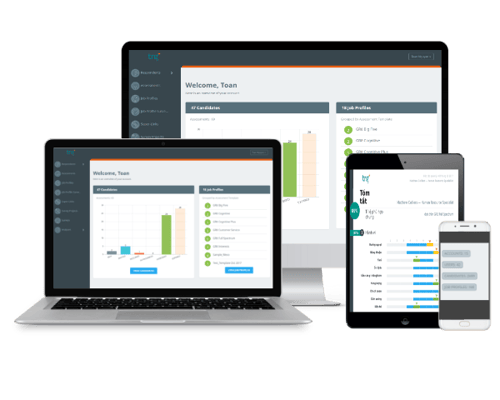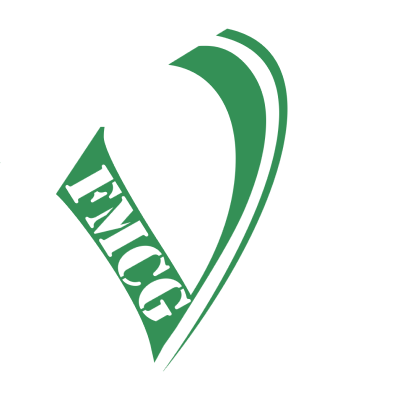According to a survey conducted by Robert Haft, an American HR consulting firm, up to 98% of Singaporean CFOs interviewed admitted having made the wrong hiring decisions. 24% of them realised the mistake within the first two weeks of hiring.
The underlying reasons, according to the survey, was due to:
A direct effect we can all see from bad hires is a drop in productivity and performance, and an increase in recruitment costs. Though there are various ways to resolve the bad hire problems, its aftermath can cause headaches to any business owners and recruiters.
What’s more, there is this age-old question of whether organisations should "Build" or "Buy" their workforce. Recruitment can become a complicated topic to discuss.
Nevertheless, the purpose of recruiting remains unchanged over time: to find the most suitable candidate that fits in well with your culture and helps your company to thrive.
In today's VUCA environment, the traditional way to approach a job candidate is no longer viable. Hiring in the twenty-first century needs to be more agile.
Agile recruitment aims at creating opportunities for instant feedback, learning, iteration, and correction. Thus, this approach brings flexibility, efficiency, and visibility to the hiring team, HR departments and the entire organisation.
Modern Talent Management solutions have helped HR professionals tremendously in streamlining the talent acquisition process. Thus, hiring in the HR 4.0 era has birthed a new concept – recruitment automation, leveraging emerging technologies to automate manual hiring procedures.
Talent acquisition today is no longer take on a passive approach - idling waiting for candidates to knock on your door. Recruiters have found ways to incorporate technology advancements into the daily functions. Most notably, the emergence of social recruiting.
In short, social recruiting is utilising popular social media platforms, such as Facebook and LinkedIn, to search, attract, and acquire talents. 9 out of 10 of organisations already employ these platforms to not only attract and engage with potential candidates but also to build an employer brand.
Another recent buzzword is HR Analytics, which enables HR functions to take advantage of the immense power that data brings. Applying analytics algorithms into HR can improve the talent acquisition process by empowering recruiters to make more accurate and timely decisions in addition to predicting future growth.
Many HR professionals believe that HR Analytics will become mainstream. As we generate hundreds and hundreds of data daily, the traditional way of data management and human instincts are no longer viable in this day and age.
HR Analytics not just about compiling employees and candidates' data. The purpose of HR Analytics is to model and predict human capabilities to optimise the organisation's investment in human resources.
Inbound recruiting is another recruiting technique that has seen a sudden surge in utilisation recently. Based on the inbound concept used in Marketing, inbound recruiting is about generating and strategically publishing engaging content to enhance the employer brand and to entice the candidate's attention.
In other words, inbound recruiting helps recruiters engage with top talents through tailored content. The perks of using the inbound methodology are candidates will be naturally drawn to the brand instead of having recruiters to go all out looking for applicants.
Companies simply cannot reply to every incoming job applications. Likewise, job seekers do not blindly apply to every job ad that they see. With just a few keywords and a few minutes to spare, candidates can dig up information about a particular brand on the internet. Not to mention, young job seekers today are digital natives and like to conduct a thorough search about anything.
On the other hand, organisations want to attract candidates that possess a combination of qualified skills and experience. Therefore, for employers and potential employees to meet halfway, companies need to cultivate:
Employer branding is how your company is perceived in the eyes of the candidates. The employer brand is reflected in the daily operations and the messages that organisations convey to the public.
A strong employer brand can differentiate your company from the competitors, which, as a result, helps you to attract higher quality talents.
The brand represents your entire organisations, from your culture to the working environment, core values, and strategic vision. Managing your company image online and offline, both public and internal image can be draining as it requires a detailed strategy. This includes managing your company's public profiles on various social media platforms, forums, and company review sites in addition to turning your current employees into ambassadors to promote the brand.
Company culture helps shape the candidates' perception of a particular employer. These two elements, culture and brand, go hand in hand together.
Company culture is the values, beliefs, practices that are shared among all members of the organisations. Examples can be a collaborative digital culture, a culture that promotes life-long learning, or a culture that treasures work-life balance.
A unique and positive culture is a strong foundation for your employer brand. It can help you to attract quality talents as well as increase your employees' productivity and overall performance.
Just like the name implies, candidate experience is the experience the job seekers have throughout the entire recruitment process. Positive candidate experience is tightly linked with the employer brand.
To effectively design a good experience for the candidates, we have to understand what makes it bad in the first place.
Bad candidate experience can be a result of a lengthy screening process, underprepared interview session, or employers "ghost" the candidates. When a potential talent feels frustrated with the experience with an employer, they will turn to boycott the brand and its products as a result.
Businesses can consider investing in a candidate relationship management solution to streamline the candidate experience and to keep track of both current and future job applicants.
Interviews are an indispensable part of the recruitment process. It connects the employers and their future employees and creates an opportunity for job seekers to persuade the company with their skills and experience.
However, results from interview sessions can be unreliable. Most interviews are unstructured, open-ended, and do not yield any quality information on the candidates' actual performance.
Worst of all, most interviews are rated based on the interviewer's intuition and personal preferences. Our cognitive bias can lead us to misjudge an individual.
That is the reason why Google, after an intensive study on past interviews and a lengthy 300-question survey, has decided to say no to interviews.
Microsoft, on the other hand, keeps their interview procedure, but the process is revised over time. The latest rendition aims at maximising the candidate experience by letting them feel comfortable and allowing them to be the best of themselves during the interview.
Therefore, instead of using the legacy, unstructured interviews, switching to structured interviews are far more accurate in predicting the candidate's job performance. Businesses can also implement pre-hire assessments to solidify hiring decisions further.
One right hiring decision can help an organisation to lower its turnover rate as well as the costs of hiring. Pre-hire assessments, or also known as pre-employment testing, can help HR professionals to both save time and select the most suitable candidate.
Pre-hire assessments are a series of test or questionnaire that candidates are required to complete as part of the job application process. The results from these assessments are then used to evaluate the candidate's job preference and job match.
Pre-hire assessments can take many shapes and forms, one of which is psychometric-based assessment. Psychometric assessments aim at evaluating the candidate's skills, personalities, attitudes, and knowledge.
Many of pre-hire assessments are based on the idea of "Job Fit" which refers to how an employee fits into a position. When an individual fits well in their job results in higher satisfaction and improved productivity.
The more assessments are done, the more data the hiring team will be able to acquire, which they can utilise to base their decisions on. These raw data are critical in helping recruiters to understand the core behavioural traits that make up a top-performing employee.
Data obtained are used to design a "Job Fit" profile, a profile of the "ideal employee," which acts as a foundation to assess future candidates.
Various pre-hire assessment solutions available today can assist recruiters in drafting interview questions, which can help to save the recruiters' time and increase the accuracy of the selection process.
Check out our other resources on Recruitment.
Recruitment ReinventedThe War for Talent shows no signs of decline. The searches for qualified candidates are as tedious as ever. Fortunately, rapid technology advancement is significantly changing the way recruiters work. In this white paper, we will examine the latest tools every HR department should have in their arsenal. |
|
 |
The Interview AddictionMost job interviews are unstructured and prove to be unreliable and ineffective. Hiring the right people is practically a hit-or-miss matter if the hiring managers rely on unstructured interviews only. Why should HR professionals move away from traditional interviews? Download our whitepaper to find out more! |

|
A Guide to Entry-Level Recruitment | Meeting Generation ZAs the labour market is getting increasingly competitive and the Generation Z, those who were born after 1995, is starting to enter the workforce, companies need to take a deeper look at the impact of hiring graduates and how to do it right. This whitepaper will provide insights into the benefits of entry-level employees and the best practices to attract and retain them. |
Unlock your employees' full potential, drive performance, and increase productivity with TRG International's comprehensive Talent Management solutions, catered to suit your specific needs.

TRG provided great service and solutions for our recruitment and performance management process. TRG consultants are equipped with very good knowledge and have been very supportive.

Nguyen Tuan Long CapitaLand Vietnam
[TRG consultants] are devoted to supporting our HR team for the best results by thoroughly introducing the solutions, step by step guiding how to use the assessments, simplifying the guideline for users, and on-the-job training to optimise the TRG Talent products.

HR Manager FMCG Viet
IT, Talent and F&B - we think it's a great combination.
We've thrived since 1994 resulting in lots of experience to share, we are beyond a companion, to more than 1,000 clients in 80+ countries.

© 2023 TRG International. Privacy Policy / Тerms & Conditions / Site map / Contact Us
TRG encourages websites and blogs to link to its web pages. Articles may be republished without alteration with the attribution statement "This article was first published by TRG International (www.trginternational.com)" and a clickable link back to the website.
We are changing support for TLS 1.0 and older browsers. Please check our list of supported browsers.